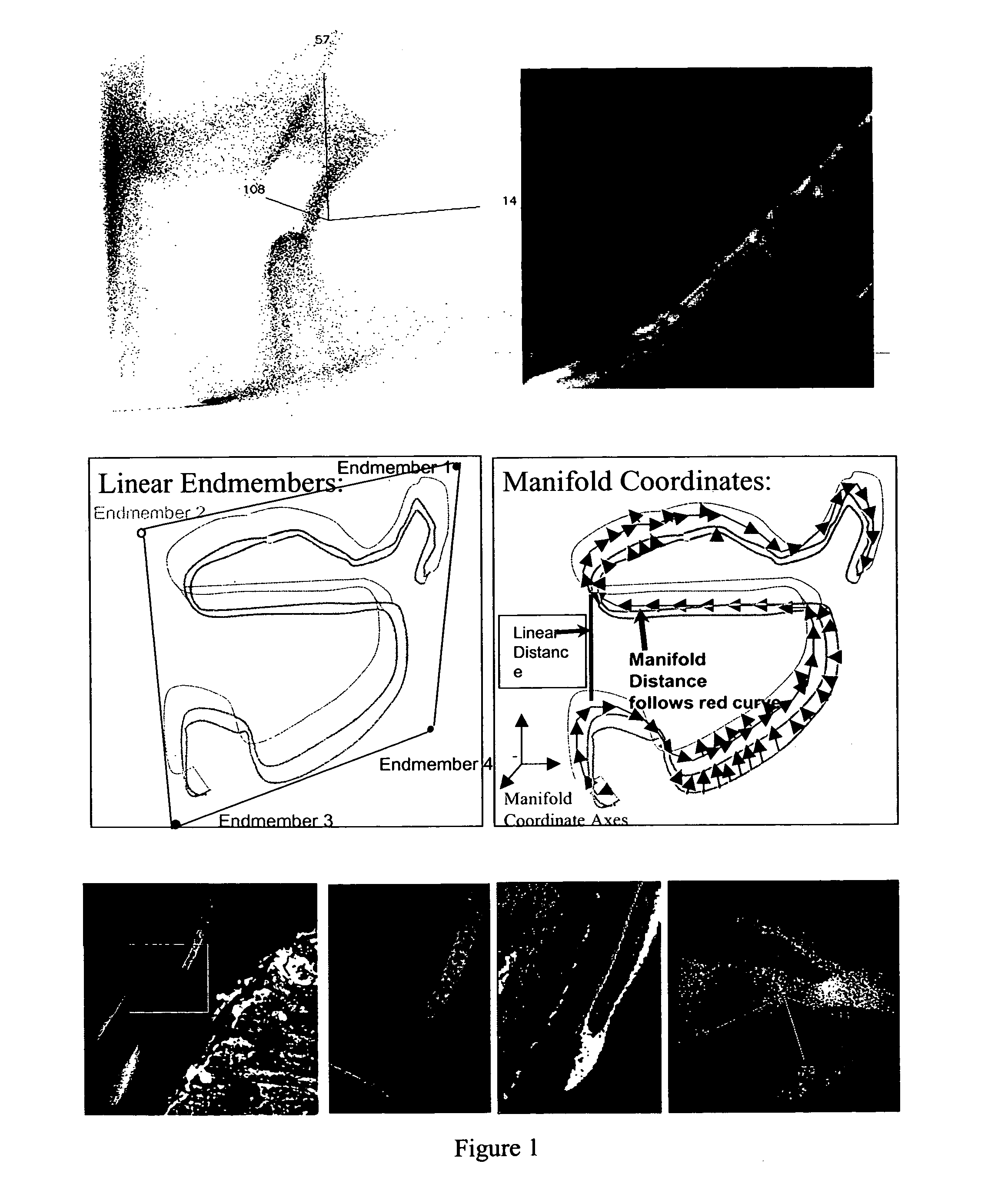Method for image data processing
a data processing and image technology, applied in the field of image data processing, can solve the problems of lle not being able to discover the optimal global coordinate system, ignoring the inherent nonlinear characteristics of hyperspectral data, and reducing so as to improve the classification performance and compression, and reduce the computational and memory cost
- Summary
- Abstract
- Description
- Claims
- Application Information
AI Technical Summary
Benefits of technology
Problems solved by technology
Method used
Image
Examples
Embodiment Construction
Manifolds
Formal Definitions
[0027]Either explicitly or implicitly, the most fundamental property that is usually exploited in manifold algorithms is that locally a manifold looks like a Euclidean space. This is essentially what is meant by the definition of a “d-dimensional topological manifold,” where, formally, we require that for each point in the manifold M, there is an open subset V with εV, for which there exists a homeomorphic mapping g that maps V into a d-dimensional open subset V′ in a d-dimensional Euclidean space
[0028]
It is this open subset V that we identify as the “neighborhood” in algorithms described herein.
ISOMAP
[0029]Of the extant methods for estimating a global manifold coordinate system, ISOMAP is the only one for which a globally optimal solution can be guaranteed. In the original ISOMAP, all Euclidean distances rij between pairs of data sample points and are calculated. Using the notation in Tenenbaum et al., a connected graph of distances dG(i,j) is first d...
PUM
 Login to View More
Login to View More Abstract
Description
Claims
Application Information
 Login to View More
Login to View More - R&D
- Intellectual Property
- Life Sciences
- Materials
- Tech Scout
- Unparalleled Data Quality
- Higher Quality Content
- 60% Fewer Hallucinations
Browse by: Latest US Patents, China's latest patents, Technical Efficacy Thesaurus, Application Domain, Technology Topic, Popular Technical Reports.
© 2025 PatSnap. All rights reserved.Legal|Privacy policy|Modern Slavery Act Transparency Statement|Sitemap|About US| Contact US: help@patsnap.com



